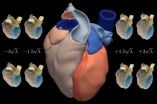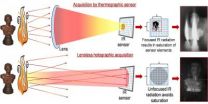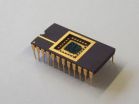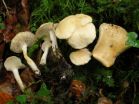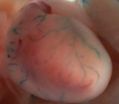(Press-News.org) Researchers at Pompeu Fabra University (Spain) have created a high resolution atlas of the heart with 3D images taken from 138 people. The study demonstrates that an average image of an organ along with its variations can be obtained for the purposes of comparing individual cases and differentiating healthy forms from pathologies.
"This atlas is a statistical description of how the heart and its components – such as the ventricles and the atrium – look," as explained to SINC by Corné Hoogendoorn, researcher at the CISTIB centre of the Pompeu Fabra University.
Scientists from this university have managed to create a representation of the average shape of the heart and its variations with images from 138 fully functioning hearts taken using multislice computed tomography. This technique offers three-dimensional and high resolution X-ray.
"In our analysis the population group included 138 people but it could be applied to much larger populations," comments Hoogendoorn. "We demonstrated the feasibility of constructing this type of atlas using many subjects, with an acceptable level of manual parameter tuning, while still providing good numeric results".
To create this cardiac map the researchers have developed a statistical model capable of managing high quantities of information provided by individual images. It can also collect temporary variations, given that the heart is never motionless.
The level of detail and the possibility to extend the atlas give it "an advantage over the majority of cardiac models present to date." This is the case according to the conclusions of the study, which was published in the 'IEEE Transactions on Medical Imaging' journal.
The researchers believe that the study can be applied to medical image processing, especially when segmenting, or in other words, properly differentiating a structure to be analysed from the rest of the image.
"The statistics of the atlas offer a continuous range of exemplary heart shapes, which allows for the comparison of concrete cases as well as the calculation of probabilities of the latter belonging to the modelled population," says Hoogendoorn.
The scientist also outlines that the method can be applied to the images of any other organ or structure. It has the advantage of providing the ability to classify and diagnose healthy shapes and pathologies as well as to differentiate between different illnesses and even establish grading amongst each.
In addition, computational simulations of the heart electrophysiology and mechanics (as well as the mechanics of other organs) can be based on the atlas, which can help to better plan treatment for patients.
This study is one more of others of its kind that highlight the increasing importance of the statistics in biomedical sciences, a mathematic discipline. What is more, 2013 is the International Year of Statistics.
INFORMATION:
References:
Corné Hoogendoorn, Nicolas Duchateau, Damián Sánchez-Quintana, Tristan Whitmarsh, Federico M. Sukno, Mathieu De Craene, Karim Lekadir, Alejandro F. Frangi. "A High-Resolution Atlas and Statistical Model of the Human Heart From Multislice CT". IEEE Transactions on Medical Imaging 32 (1): 28-44, 2013. Doi: 10.1109/TMI.2012.2230015.
An atlas of the human heart is drawn using statistics
2013-02-26
ELSE PRESS RELEASES FROM THIS DATE:
Infrared digital holography allows firefighters to see through flames, image moving people
2013-02-26
Firefighters put their lives on the line in some of the most dangerous conditions on Earth. One of their greatest challenges, however, is seeing through thick veils of smoke and walls of flame to find people in need of rescue. A team of Italian researchers has developed a new imaging technique that uses infrared (IR) digital holography to peer through chaotic conflagrations and capture potentially lifesaving and otherwise hidden details. The team describes its breakthrough results and their applications in a paper published today in the Optical Society's (OSA) open-access ...
Sweet news for stem cell's 'Holy Grail'
2013-02-26
Scientists have used sugar-coated scaffolding to move a step closer to the routine use of stem cells in the clinic and unlock their huge potential to cure diseases from Alzheimer's to diabetes.
Stem cells have the unique ability to turn into any type of human cell, opening up all sorts of therapeutic possibilities for some of the world's incurable diseases and conditions.
The problem facing scientists is how to encourage stem cells to turn into the particular type of cell required to treat a specific disease.
But researchers at the University of Manchester's School ...
A picture of health in schools
2013-02-26
Feeling comfortable and confident in sport, health, or PE can be very difficult for some young people who can be seen as a 'risk' of becoming obese. Young people from ethnic minorities, especially girls, are more likely to be physically inactive and unhealthy.
This perception needs to be addressed and challenged in school physical education (PE) according to research funded by the Economic and Social Research Council (ESRC), which shows how school provision could make use of visual approaches in developing young people's critical learning about the body.
When Dr Laura ...
Blueprint for an artificial brain
2013-02-26
This press release is available in German.
Scientists have long been dreaming about building a computer that would work like a brain. This is because a brain is far more energy-saving than a computer, it can learn by itself, and it doesn't need any programming. Privatdozent [senior lecturer] Dr. Andy Thomas from Bielefeld University's Faculty of Physics is experimenting with memristors – electronic microcomponents that imitate natural nerves. Thomas and his colleagues proved that they could do this a year ago. They constructed a memristor that is capable of learning. ...
2 new species of mushroom documented in the Iberian Peninsula
2013-02-26
In collaboration with the Royal Botanic Gardens of Madrid and the Slovenian Forestry Institute, researchers in the Basque Country have documented two new species of Hydnum, commonly known as ox tongue mushrooms, as part of their study published in the 'Mycologia' journal. This genus is known because many of its fungi are edible.
Spanish researchers have headed the discovery of two mushroom species belonging to the Hydnum genus, a type of fungus commonly used in cooking.
"During our study we discovered two new species: Hydnum ovoideisporum and Hydnum vesterholtii, which ...
EARTH: Setting sail on unknown seas
2013-02-26
Alexandria, VA – On June 5, 2012, a massive dock made landfall on Oregon's Agate Beach, just north of Newport. The dock carried with it a host of castaways, including as many as a hundred species of mollusks, anemones, sponges, oysters, crabs, barnacles, worms, sea stars, mussels and sea urchins. A placard on the side written in Japanese revealed that the dock had been unmoored from the Japanese coastal city of Misawa during the catastrophic tsunami on March 11, 2011, bringing with it an essentially intact subtidal community of Asian species to the Pacific Northwest. Although ...
Pain can be a relief
2013-02-26
If you accidently kick your toe against a doorframe you are probably going to find it very painful. As a purely intellectual experiment, imagine purposefully kicking a doorframe hard enough to potentially break your toe. When it turns out your toe has been battered but not broken, the pain may be interpreted more as a relief.
"It is not hard to understand that pain can be interpreted as less severe when an individual is aware that it could have been much more painful. Less expected, however, is the discovery that pain may be experienced as pleasant if something worse ...
When morning sickness lasts all day
2013-02-26
Almost all women experience some nausea or vomiting when pregnant. Approximately one out of every hundred suffers from acute nausea during pregnancy (hyperemesis gravidarum) and may need hospital treatment to restore hydration, electrolytes and vitamins intravenously.
"At worst, women may die if they go untreated. Many women find that the condition has an adverse effect on their work and family lives," states Åse Vikanes, senior researcher at the Norwegian Institute of Public Health and specialist in gynaecology and obstetrics.
Making up for insufficient research activity ...
Blood vessels 'sniff' gut microbes to regulate blood pressure
2013-02-26
Researchers at The Johns Hopkins University and Yale University have discovered that a specialized receptor, normally found in the nose, is also in blood vessels throughout the body, sensing small molecules created by microbes that line mammalian intestines, and responding to these molecules by increasing blood pressure. The finding suggests that gut bacteria are an integral part of the body's complex system for maintaining a stable blood pressure.
A description of the research, conducted in mice and test tubes, appeared online Feb. 11 in the journal Proceedings of the ...
Cell discovery could hold key to causes of inherited diseases
2013-02-26
Fresh insights into the protective seal that surrounds the DNA of our cells could help develop treatments for inherited muscle, brain, bone and skin disorders.
Researchers have discovered that the proteins within this coating – known as the nuclear envelope – vary greatly between cells in different organs of the body.
This variation means that certain disease causing proteins will interact with the proteins in the protective seal to cause illness in some organs, but not others.
Until now scientists had thought that all proteins within the nuclear envelope were the ...
